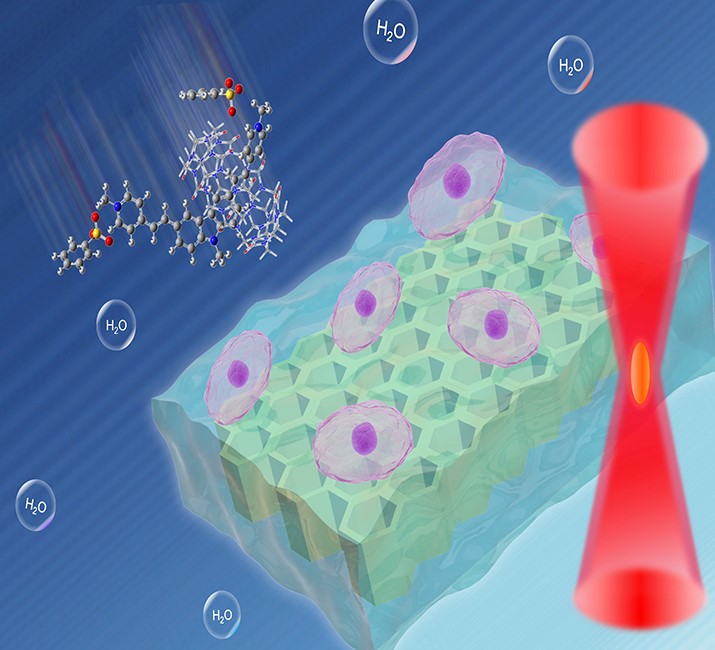Organic solvent is often used in traditional two-photon polymerization (TPP). But the residual remained in the structure is not friendly to the cells and also cause cytotoxicity. Therefore, achieving highly efficient TPP in water is safe and green for the application in the biomedical field. Water-soluble two-photon initiator (TPI) is an important element.
Three methods are often used to construct water-soluble TPIs. First, the direct modification of oil-soluble photoinitiators. Second, the use of nonionic surfactant. Third, incorporating oil-soluble photoinitiators into suitable supramolecular hydrophobic cavities.
Prof. ZHENG Meiling’s team from the Technical Institute of Physics and Chemistry of the Chinese Academy and Sciences developed a carbazole-based anion ionic water-soluble TPI (CB7/BT) by host-guest chemical interaction. The proposed strategy of changing anion improves the nonlinear optical property of water-soluble TPI.
The work is published in Advanced Functional Materials on Feb.28th 2023.
In this study, CB7 and BT are employed as host and guest molecules, respectively. CB7 not only improves the solubility and biocompatibility of BT, but also regulates the photophysical and nonlinear optical properties of BT. CB7/BT generates alkyl radical to initiate polymerization and the resolution of 127 nm is obtained. A series of 3D hydrogel structures were fabricated successfully and showed low cytotoxicity.
Compared with using iodide as an anion, the initiator with p-toluenesulfonate anion exhibits superior photophysical properties and two-photon fabrication capacity. Hence, changing anion is a powerful way to optimize the properties of water-soluble TPI.

https://doi.org/10.1002/adfm.202300293
NEWS